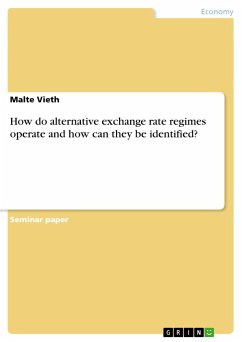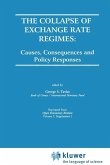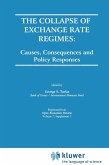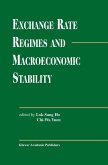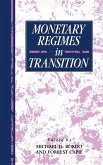Seminar paper from the year 2013 in the subject Economics - Foreign Trade Theory, Trade Policy, grade: 1,7, Johannes Gutenberg University Mainz, course: Seminar International Economic Policy, language: English, abstract: The choice of the exchange rate regime is essentially for a country. According to theimpossible trinity principle a country desires a fixed exchange rate, an autonomousmonetary policy and full capital mobility simultaneously. Unfortunately only twofeatures at the same time can be realized. A fixed exchange rate has two majorbenefits compared to a floating exchange rate. If stable it makes the trade of goodsand assets between countries easier and less costly. Additionally a fixed exchangerate may improve monetary policy discipline as expansionary monetary policy isless available to maintain a fixed exchange rate. This may lead to a lower inflationrate in the long run. But the major disadvantage is that a fixed exchange rate regimeremoves the possibility to use monetary policy in a flexible way to deal withrecessions (Abel, Bernanke and Croushore, 2011). Therefore many countrieschoose an exchange rate regime between both extreme cases (fixed or flexibleexchange rate regime). In the second chapter I will give some important theoreticalbackground concerning exchange rate regimes. In particular I will explain differenttypes of exchange rate regimes and show the difference between 'de jure' and 'defacto' exchange rate regimes. In the last part of the second chapter I will illustratethe complex exchange rate regime of the European Union. In the third chapter I willshow the toolbox of a central bank to influence its exchange rate. In the last part ofthe third chapter I will show briefly the different instruments using the example ofSwitzerland in the recent past. In my conclusion I will try to answer the question'how can different exchange rate regimes being identified'.
Hinweis: Dieser Artikel kann nur an eine deutsche Lieferadresse ausgeliefert werden.
Hinweis: Dieser Artikel kann nur an eine deutsche Lieferadresse ausgeliefert werden.

